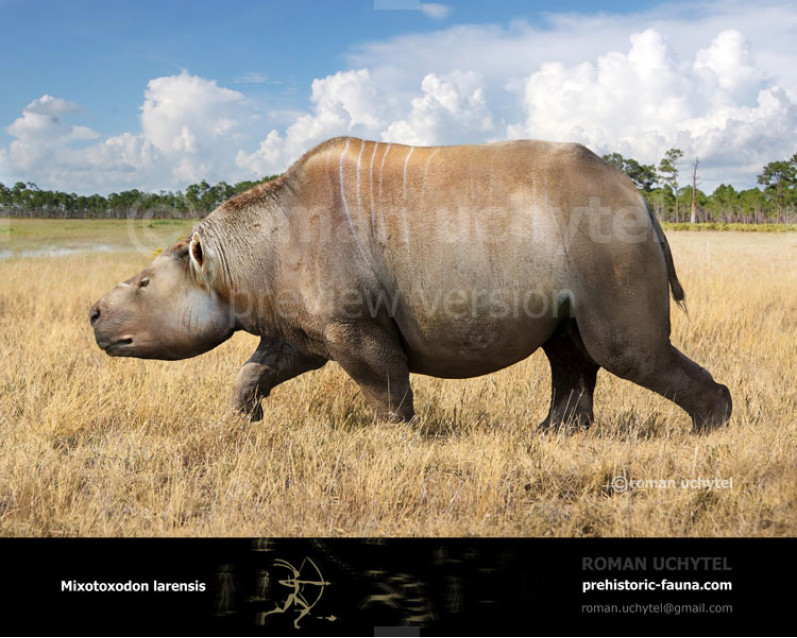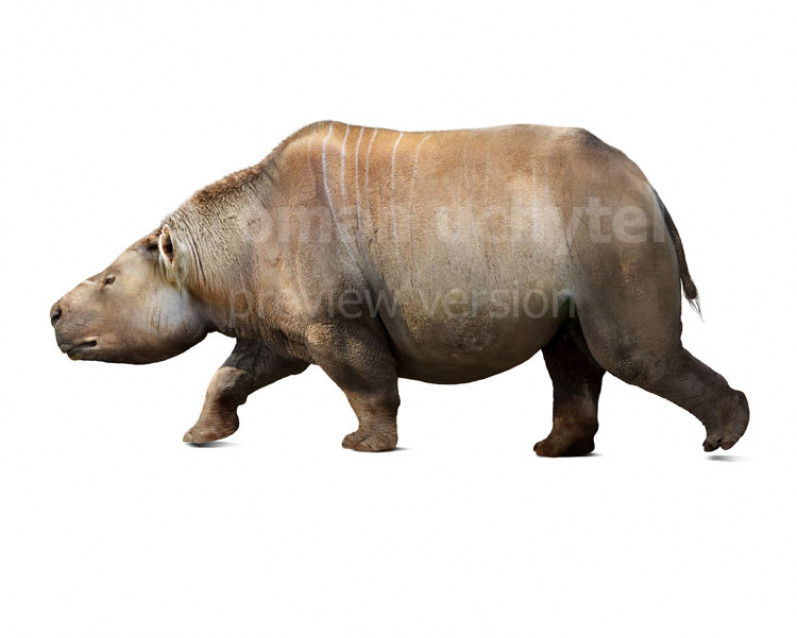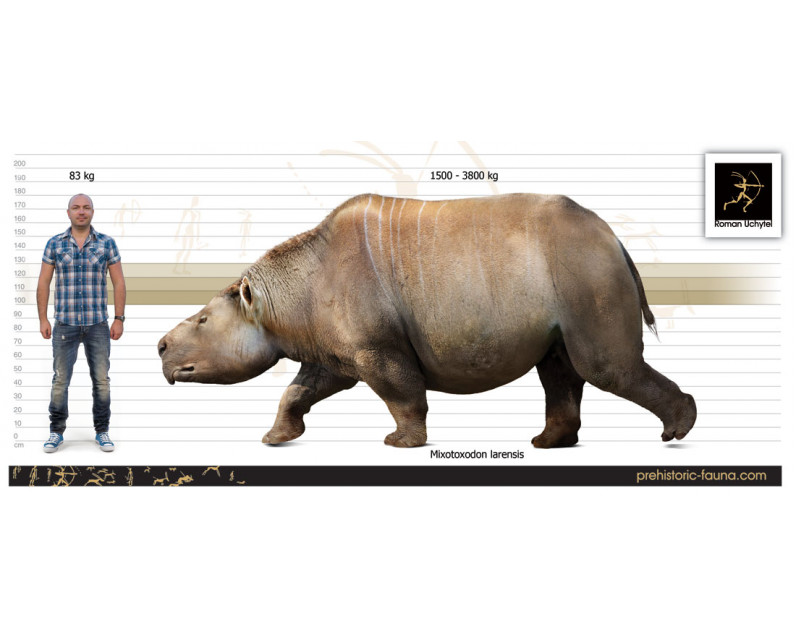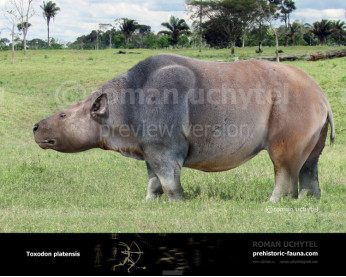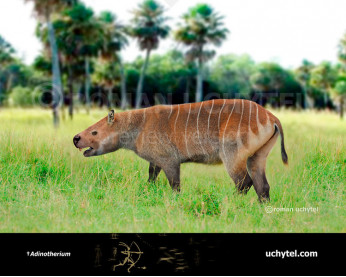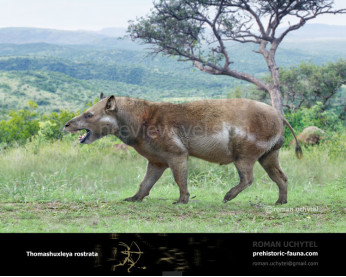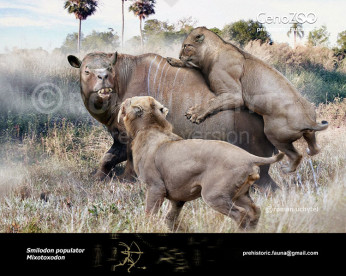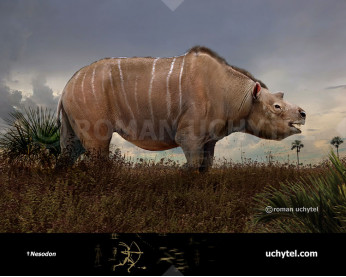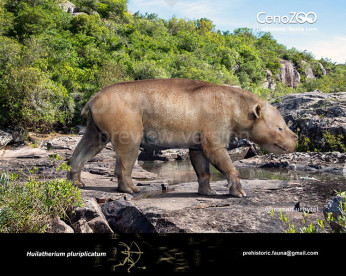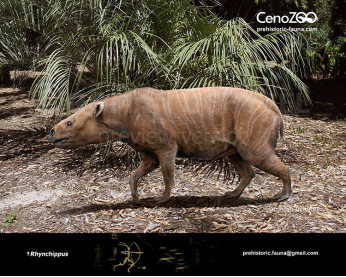Mixotoxodon larensis
333333Mixotoxodon larensis (†Mixotoxodon van Frank, 1957)
Order: †Notoungulata
Family:†Toxodontidae
Subfamily: †Haplodontheriinae
Temporal range: inhabiting South America, Central America and parts of southern North America during the Pleistocene (1.800.000 - 23.000~25.000 BCE)
Dimensions: length - 3.3 m, height - 180 сm, weight - 1500-3800 kg
Mixotoxodon is known by fragmentary remains, usually mandible fragments and teeth. Although the general appearance probably was very similar to another toxodontid from the Pleistocene, the better known Toxodon, their fossils shown that the outer borders of the symphysis in the lower jaw don't diverge anteriorly, and the incisors form a semicircular structure that protrude less than the incisors of Toxodon; the snout was cylindrical, instead of the broad hippo-like muzzle of Toxodon. The straight snout and the narrow lower incisors closely packed, suggest that this animal had a different feeding strategy compared to their southern relative, although the teeth of both genera was adapted to deal with abrasive food. It was a rhino-sized animal, with a weight of up to 3.8 tonnes, which make it the largest member of Notoungulata.
Mixotoxodon is known from a single species M. larensis. Mixotoxodon is the only notoungulate known to have migrated out of South America during the Great American Interchange. Its fossils have been found in northern South America, in Central America, in Veracruz and Michoacán, Mexico (with a possible find in Tamaulipas), and eastern Texas, USA.The genus was also one of the last surviving notoungulates, along with related genera such as the better-known Toxodon. The name refers to the fact that Mixotoxodon combines characteristics typical of different toxodontid subfamilies.
From Wikipedia, the free encyclopedia
Mixotoxodon larensis (†Mixotoxodon van Frank, 1957)
Order: †Notoungulata
Family:†Toxodontidae
Subfamily: †Haplodontheriinae
Temporal range: inhabiting South America, Central America and parts of southern North America during the Pleistocene (1.800.000 - 23.000~25.000 BCE)
Dimensions: length - 3.3 m, height - 180 сm, weight - 1500-3800 kg
Mixotoxodon is known by fragmentary remains, usually mandible fragments and teeth. Although the general appearance probably was very similar to another toxodontid from the Pleistocene, the better known Toxodon, their fossils shown that the outer borders of the symphysis in the lower jaw don't diverge anteriorly, and the incisors form a semicircular structure that protrude less than the incisors of Toxodon; the snout was cylindrical, instead of the broad hippo-like muzzle of Toxodon. The straight snout and the narrow lower incisors closely packed, suggest that this animal had a different feeding strategy compared to their southern relative, although the teeth of both genera was adapted to deal with abrasive food. It was a rhino-sized animal, with a weight of up to 3.8 tonnes, which make it the largest member of Notoungulata.
Mixotoxodon is known from a single species M. larensis. Mixotoxodon is the only notoungulate known to have migrated out of South America during the Great American Interchange. Its fossils have been found in northern South America, in Central America, in Veracruz and Michoacán, Mexico (with a possible find in Tamaulipas), and eastern Texas, USA.The genus was also one of the last surviving notoungulates, along with related genera such as the better-known Toxodon. The name refers to the fact that Mixotoxodon combines characteristics typical of different toxodontid subfamilies.
From Wikipedia, the free encyclopedia

